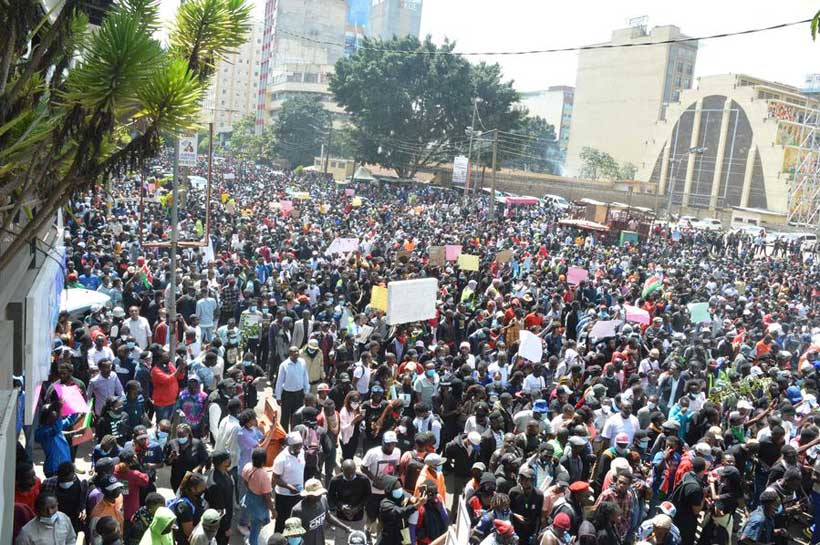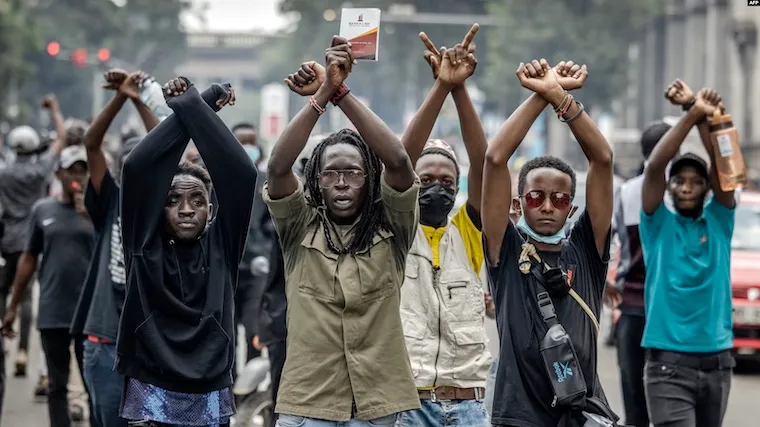With time, youths have taken on the role of shaping politics, spurred by unique perspectives, tech-savvy nature and issues of good governance, social justice, economic inequality, inclusivity and fairness.
The unique blend of idealism, digital know-how and the resolve to challenge entrenched systems makes a single youthful power center that can upset the status quo. Out of idealism, the 25th June 2024 Gen z protests in Kenya, ran on an utopian belief that they were leaderless, tribe less and apolitical. It turned out that, without a leader with clear vision and direction, the movement had to die a natural death. So the youths ought to learn from the old guards that structures form the core of any movement. The youths globally are reshaping politics based on current trends and dynamics.
The key drivers of youth influence in the political arena, may include, digital mobilization, the social media platforms like Tiktok, X and Instagram are political megaphones for Gen z and millennials. They organize movements, share ideas and call out leaders in real time. Localized issues can assume global conversations based on digital engagement. The Arab spring was sparked off by a single act by a youthful street vendor who was disillusioned by the insensitive government to his plight. A localized act assumed world attention and it caused the downfall of many governments in the Maghreb region.
Young people distrust traditional political structures. There is little faith in governments and established parties, with many youths feeling ignored on issues that affect them. This results in supporting outsider candidates from the mainstream or total abstention. There is a visible trend where youths agitate for change, but do not get involved on the Election Day. This kills the spirit of the desired change.
The issue of diverse priorities. The youths prioritize issues differently; climate justice, racial equity, digital privacy, economic and financial inclusivity, may rank higher than traditional economic or foreign policy debates.

There is the element of global connectivity, but local action. Young people draw inspiration from global peers, but act locally. What has happened in the global arena, inspires the local youths to draw insights that can be replicated at home. Student’s uprising takes a lot of cue from previous uprisings in foreign countries. The Tiananmen Square uprising was a big inspiration to the students globally who felt that democracy is universal to be enjoyed by all.
However, in their quest to fit in the changing political terrain, they face insurmountable challenges. Despite their energy, youth voter turnout often lags. During the political campaign period, they are vocal, visible and engaging, but on polling day they do not show up due to diverse reasons. They are impatient to line-up for hours to cast their vote. Some do not register, rendering them ineligible to vote. That is why rally crowds dissipate at the ballot box.
Another challenge is the economic barriers. It is a world of hustling for most youths, a minute away from their means of livelihood to engage in political activism, means foregoing unearned income. So, it is only those that have built a war chest that can afford to involve in main stream politics at the expense of a daily hustle.
Political repression and backlash deters youth involvement in politics. Authoritarian regimes can crack down on youth-led protests. The challenge here is double edged. Youths can turn out to be so violent and destructive yet it is their democratic right to express displeasure with the system.
The youths impact on the political terrain is that they give rise to new voices. Young leaders like Alexander Ocasio Cortez (USA), the people power movement in Uganda under Bobi Wine, the Economic Freedom Front (EFF) of Julius Malema of South Africa have added new voices to the political activism. These have shifted political discourse, often bypassing traditional political ladders.
Polarization and radicalization. While many youths lean progressive, others are drawn to populist or far-right movements, especially as a response to economic woes or cultural alienation. From social media engagements, it is clear youths have clear growing support for radical ideas and figures.
Youth advocacy has had tangible wins in influencing policy agenda. The lowering of the voting age to 16 years in Germany was a result of intense youth advocacy in the EU countries.
Youth are likely to keep disrupting politics, but their impact depends on overcoming systematic barriers like voter suppression or economic instability. Digital platforms will remain key, but so will be the offline organizing of protests, building community networks through public discourse. The tension between their idealism and pragmatic challenges like voter apathy will shape how much they can tilt the political terrain.

Youth movements have been pivotal in driving social and political changes across the globe, often leveraging digital tools and local grievances to challenge system issues. Youths in different countries have had varying degrees of success in redefining the politics of the day. In 2024, Kenya youths mobilized against the proposed Finance Bill, which aimed to impose taxes that would exacerbate economic hardship for many nationals. Gen z led protests, mostly organized via social media platforms using hashtags to amplify their message globally. The movement forced government to withdraw the contentious tax proposals, showcasing the power of youth- led digital activism.
In Nigeria, with #endsars2020# sparked by police brutality, especially the Special Anti -Robbery Squad (SARS), the youth demanded radical police reforms. The protests erupted in most cities and towns that led to temporary dissolution of SARS.
In South Africa, #FeesMustFall(2015-16) #, students protested against proposed university fee increase, which would limit access to education for marginalized groups. Nationwide student-led walkouts, occupation of university buildings, drew attention to educational inequality. The impact is that government froze the fees increase and increased higher education funding.
The Arab spring uprising (2010-11). Triggered by economic hardship and political repression, the youths were key to the Arab Spring uprising sparked by Mohammad Bouzizi’s self-immolation. Organized via social media, local protests turned into a national movement that led to the ouster of Bin Ali, inspiring similar protests across the Middle East.
There have been more youth-led activism that have led to changes, like the Thailand Pro- Democracy protests (2020) where students challenged the military to effect democratic reforms and monarchy accountability. Bangladesh student-led anti government protests (2024) sparked by controversial job quota system. Students led massive protests against Prime Minister Sheikh Hasina, which led to her resignation.
Fridays for Future (2018 to present) initiated by Greta Thunberg in Sweden, this global movement demands urgent action on climate change. Students in 163 countries participated in school strikes to call for adoption of climate education mandate and influenced policy discussions at the UN.
The United States March for Our Lives (2018). It was a reaction to the parkland school shooting. Students demanded stricter gun control laws to address school safety and gun violence. Led by survivors like Emma Gonzalez, youth organized nationwide matches that influenced some state-level gun reforms. Across these movements, social media platforms have been crucial in organizing, amplifying voices and building global solidarity.




